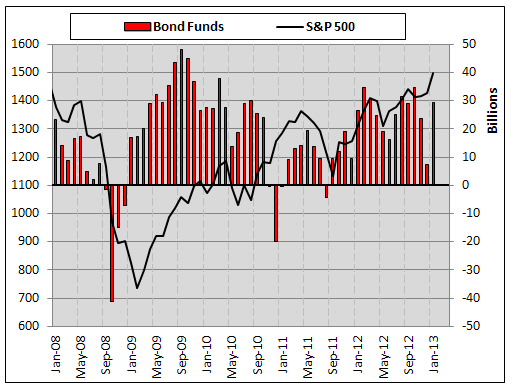Why Buy a Municipal Bond Fund
Post on: 16 Март, 2015 No Comment

Municipal Bond Funds and the Tax-Equivalent Yield
You can opt-out at any time.
So you have heard a lot of talk about municipal bond funds and do the research to find a fund for you. But your research suggests that the yields of these municipal bond funds are less than many of their bond fund counterparts. So, why would you want to buy a municipal bond fund if you can buy another bond fund that has a higher yield?
What Are Municipal Bond Funds?
Municipal bond funds hold bonds that are issued by state and local governments (and other related entities). Municipal bond funds are generally purchased for the favorable tax treatment given to municipal bonds and the diversification benefits of a mutual fund. But how do you determine if the yield of a municipal bond fund is attractive compared to a taxable bond fund? All else equal, the answer lies in the tax-equivalent yield.
Tax-Free Nature of Municipal Bond Funds
Generally, the income generated within municipal bond funds is tax-free at the federal level. If the fund owns municipal bonds issued in the home state of the investor, then this interest is also tax-free at the state level.
Due to the tax-free nature of municipal bonds, the issuer (in this case the municipalities) can offer a lower yield than taxable bonds (e.g. corporate bonds, US Treasury bonds) with similar characteristics (i.e. maturity, credit quality) while still attracting investors.
A quick calculation of the tax-equivalent yield will help an investor decide if they are a good candidate for a municipal bond fund.
Tax-Equivalent Yield of Municipal Bond Funds
Assuming similar maturity and credit quality, would you rather buy a taxable bond that pays 5% or a tax-free municipal bond that pays 4%? A simple solution is to calculate the tax-equivalent yield. The tax-equivalent yield is the pre-tax yield that the taxable bond must pay in order to equal the tax-free municipal bond yield.
For example, if an investor in the 35% marginal tax bracket is comparing the two above mentioned bonds, the investor would divide the tax-free municipal bond yield by one minus their his/her tax rate:
Tax-Equivalent Yield = .04 / 1 — .35 = 6.15%
The calculation tells us that a 6.15% yield on a taxable bond is equivalent to a tax-free yield of 4%. So, if you are comparing taxable bond funds with municipal bond funds, the tax-equivalent yield is a reasonable place to begin the research process.
You can also multiply the taxable bond yield of 5% by one minus your tax rate (.05 times 1-.35 = .0325). This calculation tells us that a taxable bond yield of 5% is equivalent to a tax-free municipal bond fund yield of 3.25%.
Are Municipal Bond Funds For You?
Municipal bond funds are generally attractive to investors in high tax brackets and outside of tax-deferred retirement accounts (e.g. IRAs, 401ks) where tax is deferred on taxable bonds. However, you should use the tax-equivalent yield calculation to determine if the after-tax yield is attractive.














